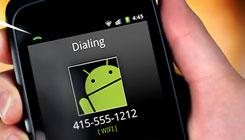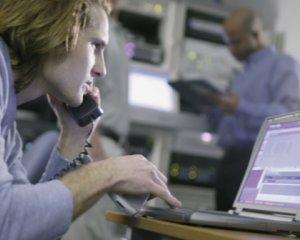 NASA is embracing low-cost, commercial technology in its Small Spacecraft Technology Program, an exciting new effort that embraces rapid prototyping and uses only commercially available hardware, with no modifications. That means it can pursue ideas like this: The technology in a smartphone is robust enough to use the devices as on-board computers for small satellites.
NASA is embracing low-cost, commercial technology in its Small Spacecraft Technology Program, an exciting new effort that embraces rapid prototyping and uses only commercially available hardware, with no modifications. That means it can pursue ideas like this: The technology in a smartphone is robust enough to use the devices as on-board computers for small satellites.
A small team of engineers working on NASA's PhoneSat at the agency's Ames Research Center at Moffett Field, Calif., aim to rapidly evolve satellite architecture and incorporate the Silicon Valley approach of "release early, release often" to small spacecraft.The price tag for one of these nanosatellites is considerably smaller than those of larger spacecraft that required custom architecture and computing environments. At just $3,500 these cute little devices might be affordable for even the average person to launch into orbit one day. That's not the goal of the program, of course, but it's an interesting view of the future of small spacecraft. The PhoneSat program will use the Nexus One and newer Nexus S Android-powered smartphones. Before being used for the nanosatellites, the phones were put through space camp (of sorts) to determine their fitness for space flight. I see an excellent PR opportunity in Android's future when the nanosatellites transfer data from back to earth. The Nexus could well see a spike in sales, thanks to NASA use. The Nexus S is already looking better as my next phone upgrade. NASA's small spacecraft program is a refreshing approach to developing cost-effective solutions for unmanned space exploration and data gathering. The launch of the first PhoneSat nanosatellite is scheduled for sometime in 2013.
Finding New Solutions
In April NASA hosted a PhoneSat Android App challenge where more than 100 developers from around the world created some interesting solutions to interesting problems. The goal was to give them an opportunity to address an extreme environment, and to know their work was actually used in space by NASA.This event celebrated technology development in its most positive context—using minimal resources and maximum brainpower to create outside- the-box solutions in response to interesting problems.Solutions had to meet a long list of criteria for spaceworthiness. Do you think you could build a great space app to run on the PhoneSat? Tell me about it in the comments below.
[youtube http://www.youtube.com/watch?v=uKKKiFR8qWg&w=560&h=315&wmode=window&h=315]
Related Links- Android Smartphones to Power NASA's Future Nano Satellites [Mobile and Apps]
- Small Spacecraft Technology Program [NASA]
- PhoneSat Demonstration [NASA]



